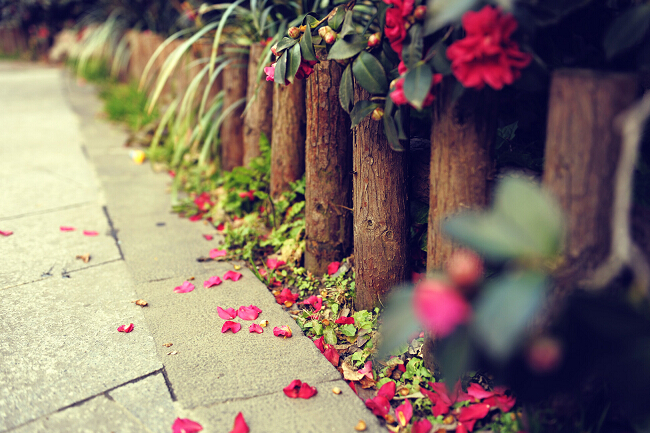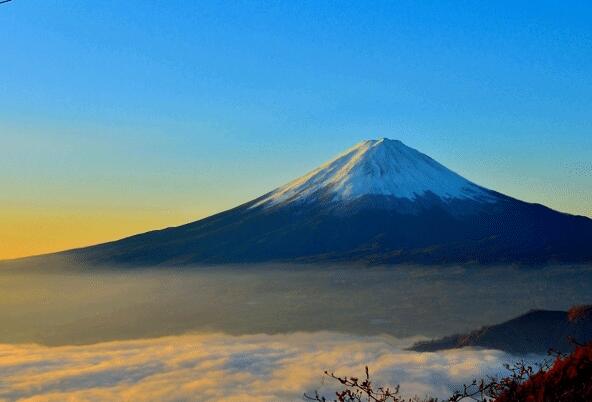
我没有上过专业的导游培训,现在在做实习导游,导游词普通话什么的都没有问题,就是师傅说我气场太小,有
导游是旅游业中最积极、最活跃的元素。
对旅游者来说,导游就是带领旅游者寻你美、欣赏美和享受美的人。
而同时,导游又是实践性很强的一项工作,作为一名称职的导游员,除了需要强烈的服务意识之外,还应掌握带团程序与服务内容,特别是带团过程中的技能,技巧,是搞好导游服务的至关重要的事情。
名人效应 如今绝大多数人都信服名人效应。
因为实践已经证明领袖人物、知名专家、学者、英雄模范等人物的言行是具有影响力的。
聪明的商家也深知名人效应的作用,找名人为其产品作广告,大大提高这些产品的知名度,从而使产品销量大增。
正因为名人效应如此神奇,所以导游员要在效应两字上做文章。
在具体讲解时应该做到以下几条: 1、要感动别人,首先自己要感动。
在运用名人效应法时,既要通过名人的言行,也要通过名人的感人事迹,使游客真正感受到名人的伟大之处一段名言、一个故事,都要重点突出其闪光点,如能加上亲身的感受,就会收到更佳的讲解效果。
2、着重突出名人的闪光点。
在介绍或讲解名人事迹时要做到实事求是,不要为了艺术效果而有意编造故事,更不要听见风就是雨,把别人讲过的故事不加核实和研究就拿来作为自己的讲解导游词。
这样,也许名人效应在你的讲解中损坏了自身的形象。
为此,导游员要努力提高自身的知识水平,不断地在学习素材上下功夫,特别要结合景点挖掘名人那些被人们不注意的小事情、小故事,做到出奇制胜。
其次,要运用好名人效应法首先在自己语言表达上要有讲究,言语要精练生动,讲解层次要分明有序,其“闪光点”要吸引人、教育人。
3、严防“出轨”。
在运用名人效应法的同时,要特别注意和防止负面效应的影响。
有些导游员为了显示自己“博学多才”,常常在讲解名人业绩的后面又增添了一些“花絮”故事,什么有几个老婆啦,又有什么风流逸事啦,以后又有几个孩子啦,等等,更有些导游员把正面宣传和花絮故事变成了三七开。
这种做法不是我们所说的名人效应法。
我们的任务是讲解好名人的业绩,千万不要冲淡这个主题,不要滑边、出轨。
以身说法 所谓以身说法法是指导游员用自己亲身经历的事实为例证,针对游客进行讲解的方法。
以身说法法在导游带团过程中起着很大的作用,它不仅可使游客颇受教育,而且还能使导游员谈谈亲身感受和说说心里话。
同时,游客也比较容易接受和喜欢。
运用以身说法法的基础和前提必须是导游员亲身经历或感受较深的事实。
如果没有深切的感受还是不运用该法为好,勉强和附会只能引起游客的误解和错觉其次,导游员把事实经历以及感受要有一番精心的取舍,这样才能有个充分的准备,达到预期的效果。
再其次,导游员在讲解景点时既要介绍景点的情况,又要结合自己谈体会。
在许多情况下,导游员往往忽略了自己的亲身体会,因此,将两者相结合的做法效果会更好。
又因该法本身具有可靠性,加上讲解的素材是旁人不可替代和弥补的,因此更具有说服力。
还有,导游员面对游客的感情变化,可以谈谈自己类似游客的感情体验,既可引起游客的思想启迪,更可使对方得到感情深化。
总而言之,以身说法法在众多导游讲解艺术中占据十分重要的位置,导游员也应充分运用这一简便的“武器”为自己服务。
拟人比喻 所谓拟人比喻法,是指导游员把不属于人的事与物比作人,通过比较恰当的比喻,赋予这些事与物于人的思想感情和行为,使之形象鲜明生动、通俗易懂,产生风趣幽默感。
运用拟人比喻法能创造出旅游团队里的活跃和谐气氛,引出游客们丰富的想像力,从中得到启发和知识。
比如,导游员常把寺庙中的菩萨,比作有血有肉有感情的人,说他们仿佛从遥远的天宫一个个地回到了人世间,并且接受人间的香火。
运用拟人比喻法还可以为团队旅游过程中那些不尽如人意的方面进行疏导,从而取得游客的谅解,化解消极和不满情绪。
比如“老外”在园林中不慎碰伤额头,导游员一方面安抚游客,另一方面风趣地说:“这假山真可恶,该死
不过您看,它已低下头向您赔礼道歉哩。
”游客听后不好意思地笑了,心中的不悦也消失了一半。
拟人比喻法还可通过导游员恰当的比喻、夸张、寓意和象征等,含蓄地揭露和批评团队生活中不通情理的事情和现象,使游客在轻松和微笑中得到启迪。
它不仅含有讽刺的意味,而且是一种幽默含笑的批评。
在使用拟人比喻法时,导游员要十分注意比喻内容的自然性和贴切性,切忌为招笑而失去和降低自己的人格,为取得廉价的笑声而流于庸俗,这一点是至关重要的。
要知道游客的笑是他们思想感情丰富多彩的反映,其形式也是笑姿百态、笑声各异的。
老舍先生说得好:我们要避免为招笑而招笑,而以幽默的哲人与艺术家自期,在谈笑之中,道出深刻的道理,叫幽默的语言发出智慧与真理的火花来。
拟人比喻关键在“拟”字,千万不可拿人取笑,特别是自己服务的对象,因为不当的拟人会刺伤游客的自尊心和感情。
例如,以景点图案拟人,把老寿星比拟额头高的游客,把瘦猴子比拟较瘦小的游客,把翠竹比拟身材瘦长的游客等等,这样的拟人是不文明的表现,也是一种瞧不起及不尊重游客的反映。
顺便指出的是拟人切忌粗话脏话,当然,有时粗俗低级的比喻和丑陋的奇闻趣事也会引人发笑,但不能给人以美的享受,也不能在笑声中得到启迪和知识,更不能让人接受。
如何写导游词的评语
故宫词Lying at the center of Beijing the Forbidden City, called Gu Gong, in Chinese, was the imperial palace during the Ming and Qing dynasties. Now known as the Palace Museum, it is to the north of Tiananmen Square. Rectangular in shape, it is the world‘s largest palace complex and covers 74 hectares. Surrounded by a six meter deep moat and a ten meter high wall are 9,999 buildings. The wall has a gate on each side. Opposite the Tiananmen Gate, to the north is the Gate of Devine Might (Shenwumen), which faces Jingshan Park. The distance between these two gates is 960 meters, while the distance between the gates in the east and west walls is 750 meters. There are unique and delicately structured towers on each of the four corners of the curtain wall. These afford views over both the palace and the city outside. The Forbidden City is divided into two parts. The southern section, or the Outer Court was where the emperor exercised his supreme power over the nation. The northern section, or the Inner Court was where he lived with his royal family. Until 1924 when the last emperor of China was driven from the Inner Court, fourteen emperors of the Ming dynasty and ten emperors of the Qing dynasty had reigned here. Having been the imperial palace for some five centuries, it houses numerous rare treasures and curiosities. Listed by UNESCO as a World Cultural Heritage Site in 1987, the Palace Museum is now one of the most popular tourist attractions world wide.Construction of the palace complex began in 1407, the 5th year of the Yongle reign of the third emperor of the Ming dynasty. It was completed fourteen years later in 1420. It was said that a million workers including one hundred thousand artisans were driven into the long-term hard labor. Stone needed was quarried from Fangshan, a suburb of Beijing. It was said a well was dug every fifty meters along the road in order to pour water onto the road in winter to slide huge stones on ice into the city. Huge amounts of timber and other materials were freighted from faraway provinces. Ancient Chinese people displayed their very considerable skills in building the Forbidden City. Take the grand red city wall for example. It has an 8.6 meters wide base reducing to 6.66 meters wide at the top. The angular shape of the wall totally frustrates attempts to climb it. The bricks were made from white lime and glutinous rice while the cement is made from glutinous rice and egg whites. These incredible materials make the wall extraordinarily strong.Since yellow is the symbol of the royal family, it is the dominant color in the Forbidden City. Roofs are built with yellow glazed tiles; decorations in the palace are painted yellow; even the bricks on the ground are made yellow by a special process. However, there is one exception. Wenyuange, the royal library, has a black roof. The reason is that it was believed black represented water then and could extinguish fire.Nowadays, the Forbidden City, or the Palace Museum is open to tourists from home and abroad. Splendid painted decoration on these royal architectural wonders, the grand and deluxe halls, with their surprisingly magnificent treasures will certainly satisfy modern civilians. Welcome to the temple of Heaven. (After self-introduction) preserved cultural heritages of China. There are basically two kinds of visitors who come here: local pensioners who do exercises here in the morning and evening and sightseers both from home and abroad. All in all ,there are 12 million visitors very year. Now we are going to go along the route that leads to the alter. It will take roughly one hour. Mind you ,the emperor also walked along this route to pay tribute to the God of Heaven. (Along the Southern Sacred Road leading to the Circular Mound Altar) The largest group of architectures ever to be dedicated to Heaven ,the Temple of Heaven served as an exclusive altar for Chinese monarchs during the Ming and Qing dynasties. It was decreed that rulers of successive dynasties would place altars in their own capitals to worship Heaven and pray for good harvest. But why ? The ancient Chinese believed that Heaven was the supreme ruler of the universe and the fate of mankind ,and thus worshiping rites dedicated to Heaven came into being. The Heaven the ancient Chinese referred to was actually the Universe, or nature. In those days, there were specfic rites of worship. This was especially true during the Ming and Qing dynasties when elaborate ceremonies were held. The Temple of Heaven was built in 1420 during the reign of Emperor Youngle of the Ming Dynasty. Situated in the southern part of the city ,this grand set of structures covers an area of 273 hectares. To better symbolize heaven and earth ,the northern part of the Temple is circular while the southern part is square .The whole compound is enclosed by two walls, a square wall outside a round one. The outer area is characterized by suburban scenery, while the inner part is used for sacrifices. The inner enclosure consists of the Hall of Prayer for Good Harvest and the Circular Mound Altar. (Along the Imperial Passage leading from the Southern Lattice Star Gate in front of the Circular Mound Altar) the Circular Mound Altar is enclosed by two walls ,each containing four groups of Southern Lattice Star Gate, each in turn consisting of three doors, with 24 marble doors altogether. Standing on the passage facing north, you will notice that with each pair of doors on is narrower than the other. This reflects the feudal hierarchy: the wider door was reserved for monarchs, while the narrower one was used by courtiers. On the day of the ceremony ,the emperor would don his ritual costume and be ushered in by the official in charge of religious affairs. He ascended the three terraces in the forefront to pay tribute at the alter. (Atop the Circular Mound Alter) we are now on the top terrace of the Altar, or the third terrace .Each terrace has a flight of 9 steps. At the center of this terrace lies a round stone surrounded by 9 steps. At the center of this terrace lies a round stone surrounded by 9 concentric rings of stone. The number of stones in the first ring is 9, in the second ,18, up to 81 in the 9th ring. Even the number of carved balustrades on these terraces is a multiplee of 9. But why? According to ancient Chinese philosophy, yin and yang were two opposing factors. Heaven and the odd numbers belonged to yang while the Earth and even numbers belonged to yin. Nine was the largest heavenly number accessible to man . What is more, the ancient people also believed that heaven consisted of nine layers and that the emperor s abode was on the uppermost tier. Once more look at the round stone in the center. The upper terrace is nine zhang (a Chinese unit of length, one zhang equals 3.3 meters ) in circumference ,while the middle is 15 zhang, the lower, 21 zhang. Classified as yang numbers, the sum of these numerals is 45 zhang which was meant to symbolized success. What is more, by applying the concept of odd numbers and strengthening nine and its multiples, the concept of heaven was thus illustrated and realized . The concept of nine will also be mentioned when we visit some other buildings. Now I will give you a brief account of what happened here annually on the Inter Solstice. The memorial tablet dedicated to Heaven would be set up on the north side of the terrace, while tablets dedicated to the emperor `s ancestors would be enshrined on the flanks. The service would begin around 4 o` clock in the morning. All of the lanterns would be lit .In the foreground, a sacrificial calf is being barbecued. On the square in front of the altar, the emperor, under heavy escort of nearly a thousand courtiers, princes of royal blood ,musicians, dancers and uniformed soldiers, would slowly ascend the altar to offer sacrifice and pray in honor of Heaven. When the service drew to a close ,the sacrifice offered in front of the memorial tablets would be incinerated .All of participants would watch the thick smoke rise upward as if they were seeing God off .Music and dancing would follow .In the end ,the emperor would return to the Forbidden City secure in the belief that he would be blessed and protected by Heaven until the next winter Solstice. It is interesting to note that ,the stone in the very middle of the altar was of major importance ,since it was where the emperor used to stand to say his prayer. The stone ,which is known as the God`s heart Stone, is peculiar in that it is characterized by a specific acoustic phenomenon: it made the emperor` s voice clearer and louder, thus adding to the mystic atmosphere of the service .You can try this out by yourself. (Proceed northward to pass through the Lattice StarGate) (In front of the Gate of glazed tiles) this structure is known as Heaven` s Storehouse. It is entered through the Gate of glazed Tiles. The roofing ,beams, and brackets are all made of glazed tiles or bricks. This is the only structure of its kind in china today . the Heaven` s Storehouse was where memorial tablets dedicated to the gods were kept. Douglas Hurd, a former British foreigh secretary ,once said , “God attends to His affairs on the Cir4cular Mound Altar but stays here. ” Now let` s go in to to see it (Go through the left side door) (In the courtyard of Heaven` s Storehouse) this is the Imperial Vault of Heaven, the main structure of Heaven` s Storehouse. It was built in 1530 and is 17 meters in height and 19 meters in diameter. The structure feature blue roofs topped by a gilded ball ,and carved wooden doors and windows. It is decorated with colored paintings. Founded on a 3-meter-hign round marble terrace ,the building also features a gigantic carved marble ramp laid in the stone staircase leading up to the front entrance.. The ramp is carved in “Two dragons Playing with a pearl ” design in relief. We will enter the main hall by going up the stone staircase on the eastern side. (On the marble terrace of the main hall) the arch of the hall is buttressed by 16 giant pillars on two rings. On top of the pillars there are gilt brackets supporting a circular caisson ,or covered ceiling .The ceiling is characterized by a golden coiling dragon design. The 8 pillar of the inner ring are painted scarlet and decorated with golden lotuses. To the north of the hall there is a marble pedestal. Atop it ,up a wooden flight of 9 steps, is where the major tablet dedicate to Heaven was enshrined. On each flank four tablets are enshrined in honor of the ancestors of the Qing emperors. In the annex hall in hornor of the ancestors of the Qing emperors. In the annex halls in the courtyard, there are tablets dedicated to the deities of the sun, moon ,constellation, cloud ,rain, wind and thunder. (Echo Wall and Triple –sound Stones) Aside from exquisitely laid out architectures, Heaven` s Storehouse is also famous for two structures with peculiar acoustic features, i. E. the Echo Wall and the Triple- Sound Stone. A mere whisper at any point close to the wall can be heard clearly on the other side, although the parties may be 40 or 50 meters apart. This is possible because the wall is round and hermetically constructed with smooth ,solid bricks. In front of the steps leading away from the halls is the Triple Sound Stone. If you stand on the first stone and call out or clap your hands, the sound will echo once; on the second stone, the sound will be heard twice; and on the third stone, the sound will repeat three times. Hence the name. (Go out through the right door and stroll along the circular path northward) (Nine-Dragon Cypress) the Temple of Heaven is also famous for its cypress trees-there are more than 60,000 cypress trees in all ,among which over 4,000 are more than one hundred years old ,adding to the solemn atmosphere of the temple .This tall cypress was planted more than 500 years ago. Its thick branches and twisting trunk resembling nine coiling playful dragons; thus it is known as the Nine-Dragon cypress. It is said that this tree was here to welcome the monarchs. Now it is here to welcome visitor from all over the world. (In the south of Chengzhen Gate) now we are back again on the Central Axis. This brick-arched gate is known as Chengzhen (Adopting Fidelity) .This gate is the northern gate of the Circular Mound Altar and the Hall of Prayer for Good Harvest. The Hall of Prayer for Good Harvest is situated at the extreme end of the axis. It was used by the emperor in the first month of every lunar year for services dedicated to good harvest. (On the Red Stairway Bridge) entering the Hall of Prayer for Good Harvest, we set foot on a raised passage 360 meters long, which the emperor also took to proceed to the hall. This broad north-south walkway, called Danbiqiao (Red Stairway bridge), connects the two sets of main building in the Temple of Heaven and constitutes a single axis. The passage is divided into left, control and right paths by the cross arrangement of slabs. The central and the widest path is known as Heavenly Thoroughfare , which was reserved exclusively for God; nobody, including the emperor, was allowed to set foot onto it . The emperor used the path on the east ,which is known as the Imperial Walk. The ministers and princes used the one on the west .Interesting enough ,there is no walkway left for ordinary people. This is because the Temple of Heaven used to be off-limits to them. Contrary to appearances, this walkway is not a bridge at all . But how so ? This road is 4 meters above the ground and there is a cavern underneath that was reserved for sacrificial oxen and sheep. The cattle were slaughtered at a slaughterhouse about 500 meters away and brought here for sacrifice. All in all ,it can be said this walkway did serve as bridge and can be looked upon as the first cloverleaf in Beijing. Looking back at the thoroughfare, you may realize that this walk is gaining height toward its northern end. As people approach the architectural group of the Hall of Prayer for good Harvest, the flanking groves of cypress recede and perspective widens. Here you are in Heaven. (Costume-Changing Terrace) the marble terrace up ahead is called jufutai, or CostumeChanging Terrace. It is located to the east of the Red Stairway Bridge and covers a space of 25 square meters .IT has marble Slab balustrades. The day before the service ,officials in charge would put up a yellow satin tent on the terrace for the emperor to change out of his yellow dragon robe into blue ceremonial clothes. After the service, the emperor would return to the tentand change back into his imperial robe before returning to the palace. (Proceed to the South Gate of the Hall of Prayer for Good Harvest) (At the Gate of Prayer for Good Harvest) this structure is called the Gate of Pray for Good Harvest. We can catch a slight glimpse of the central building ,the Hall of Prayer
求一篇大约350字的导游词,谢谢。
亲爱的同学们: 你们好
我是导游XXX,很高兴见到你们。
“大家请看,这里就是我们的学校了
” “我们的学校历史悠久,是一所百年老校,占地约XXXX亩,建于XXXX年。
之类的历史你没有说清楚,。
”“大家请随我来。
” “这是小操场,也是低年级小同学做广播体操的地方。
” “那边是大操场,我们大同学在那里做课间操,同时也是我们大同学的乐园。
平时下了课,同学们都那打篮球,开心极了
” “如果想要更多地了解我们学校的概况,那请往这边来,这里有一个关于我们学校的简介,大家可以仔细地看一看。
” “这三座四层的楼房是我们的教学楼,粉红色的墙面,淡蓝色的栏杆,栏杆上还有好多海鸥在展翅飞翔。
很漂亮是吧
清晨,我们的教学楼沐浴在阳光中,显得分外亮丽。
” “我们的教室宽敞明亮,有舒适的桌椅,有先进的多媒体教学设备,每到教师节之类的重大节日时,我们就在黑板上亲手绘制美丽的图画,送给老师一份意外的惊喜。
” “大家再跟我来,看到这个美丽的小花坛了吧,它一年四季都绽放着五颜六色的花朵,宛如一幅色彩鲜艳的风景画点缀着我们的校园,我们可喜欢它了
” “这儿是一座假山,你们看,池水多么清澈,还有可爱的小鱼在池里游来游去,多快活啊
” “这就是我们美丽的校园,现在大家可以随意地参观一下。
楼猪,你学校的历史啥的你自己在修改下,估计就这样了,你们学校还有啥就加上去,没有的就去掉,希望能帮到你喔,嘿嘿。



